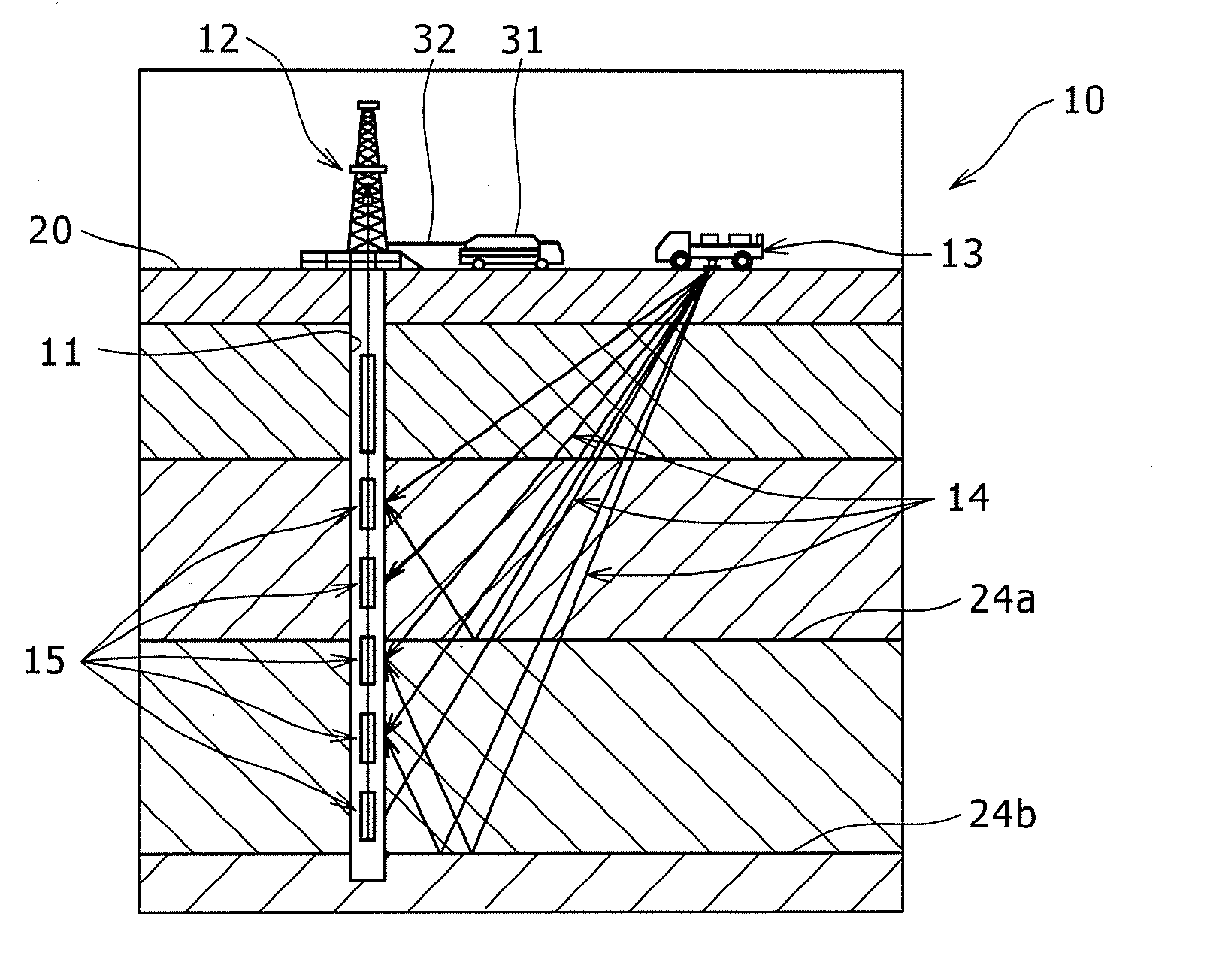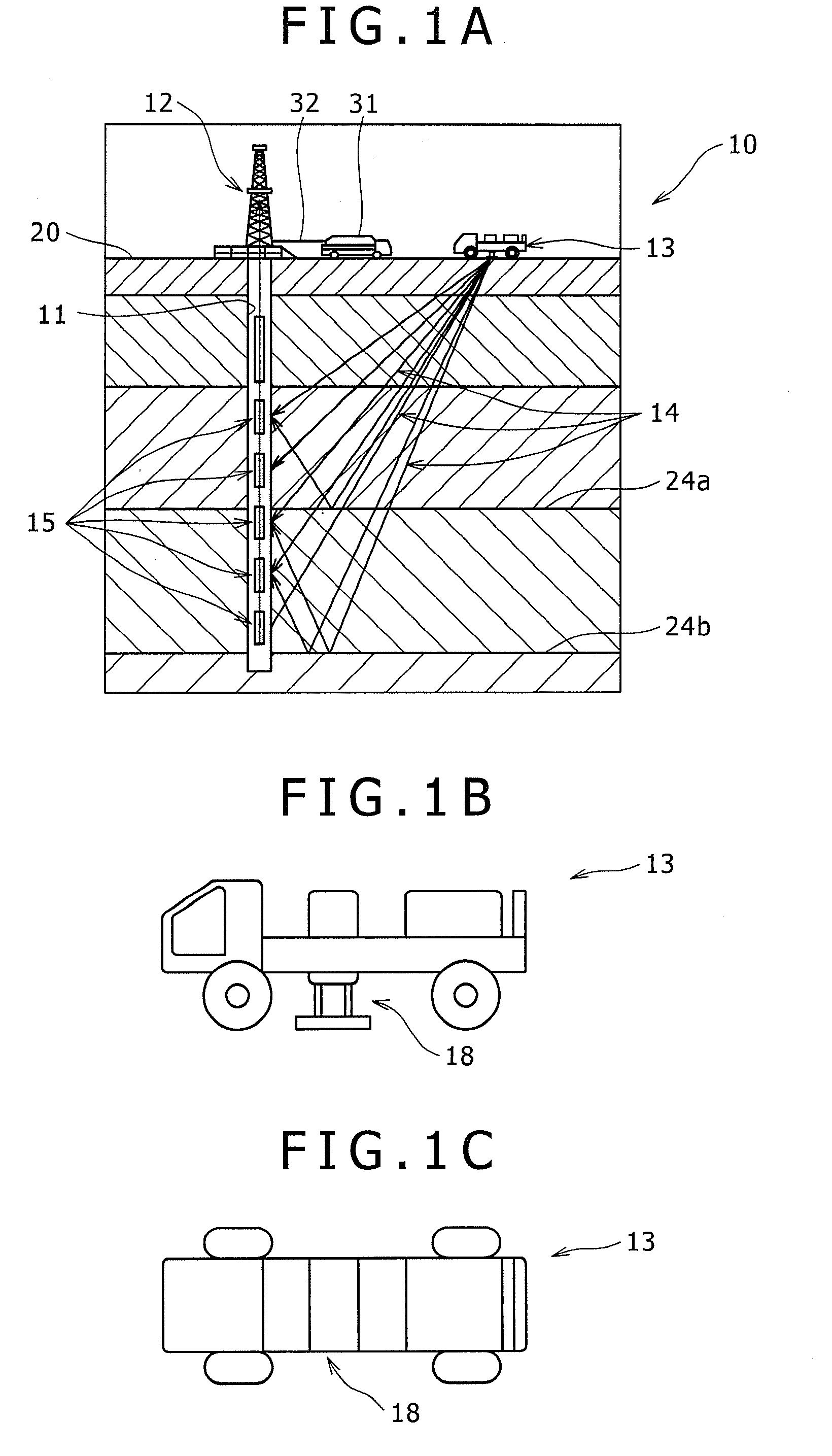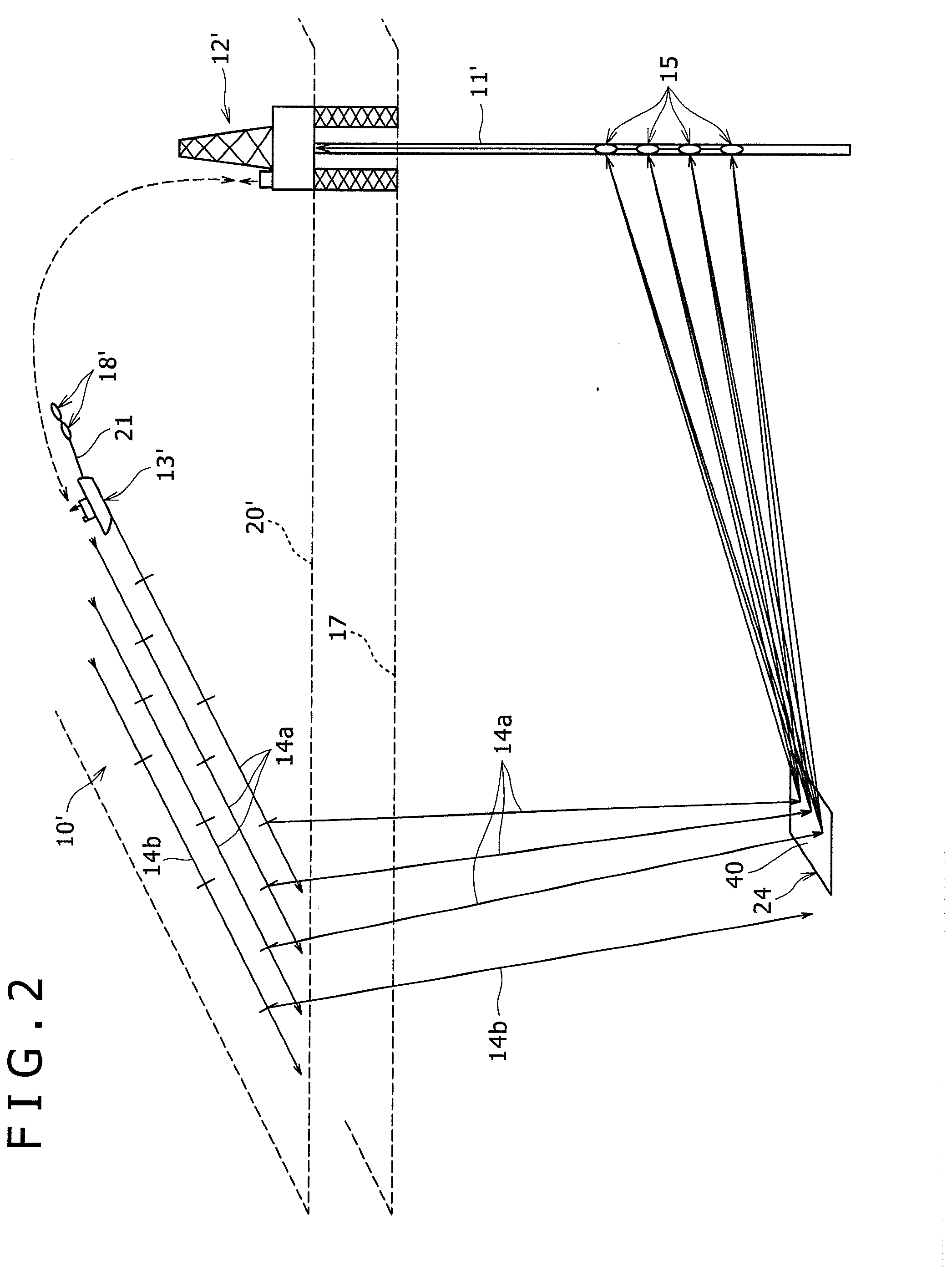Real-Time Reflection Point Density Mapping During Three-Dimensional (3D) Vertical Seismic Profile (VSP) surveys
a technology of vertical seismic profile and density mapping, which is applied in the field of generating borehole seismic surveys, can solve the problems of large and costly seismic datasets, increasing difficulty in recovering hydrocarbons from subsurface formations, and increasing complexity of seismic wave acquisition
- Summary
- Abstract
- Description
- Claims
- Application Information
AI Technical Summary
Benefits of technology
Problems solved by technology
Method used
Image
Examples
Embodiment Construction
[0052]Referring to FIG. 1A, a general illustration is shown of a VSP survey 10 being conducted on a vertical well or borehole 11 that has been drilled using a land-based drill rig 12. A land-based movable seismic source vehicle 13 is also shown on the surface for generating seismic signals or source propagation paths shown generally at 14 at the surface 20 that are reflected off of one or more target reflectors 24a, 24b to be detected by an array of spaced-apart downhole directional receivers 15. The receivers 15 are in communication with a logging truck 31 via a wireline 32. The source vehicle 13 shown is intended to be illustrative of one or more seismic source vehicles that can be simultaneously placed at various azimuths around the borehole 11 and move from one location to another during the survey. FIGS. 1B and 1C illustrate a land-based source vehicle 13 with a vibrator or source element 18 while FIGS. 2, 3C, 6 and 14-16 illustrate a marine-based source vessel 13′ equipped wit...
PUM
 Login to View More
Login to View More Abstract
Description
Claims
Application Information
 Login to View More
Login to View More - R&D
- Intellectual Property
- Life Sciences
- Materials
- Tech Scout
- Unparalleled Data Quality
- Higher Quality Content
- 60% Fewer Hallucinations
Browse by: Latest US Patents, China's latest patents, Technical Efficacy Thesaurus, Application Domain, Technology Topic, Popular Technical Reports.
© 2025 PatSnap. All rights reserved.Legal|Privacy policy|Modern Slavery Act Transparency Statement|Sitemap|About US| Contact US: help@patsnap.com



